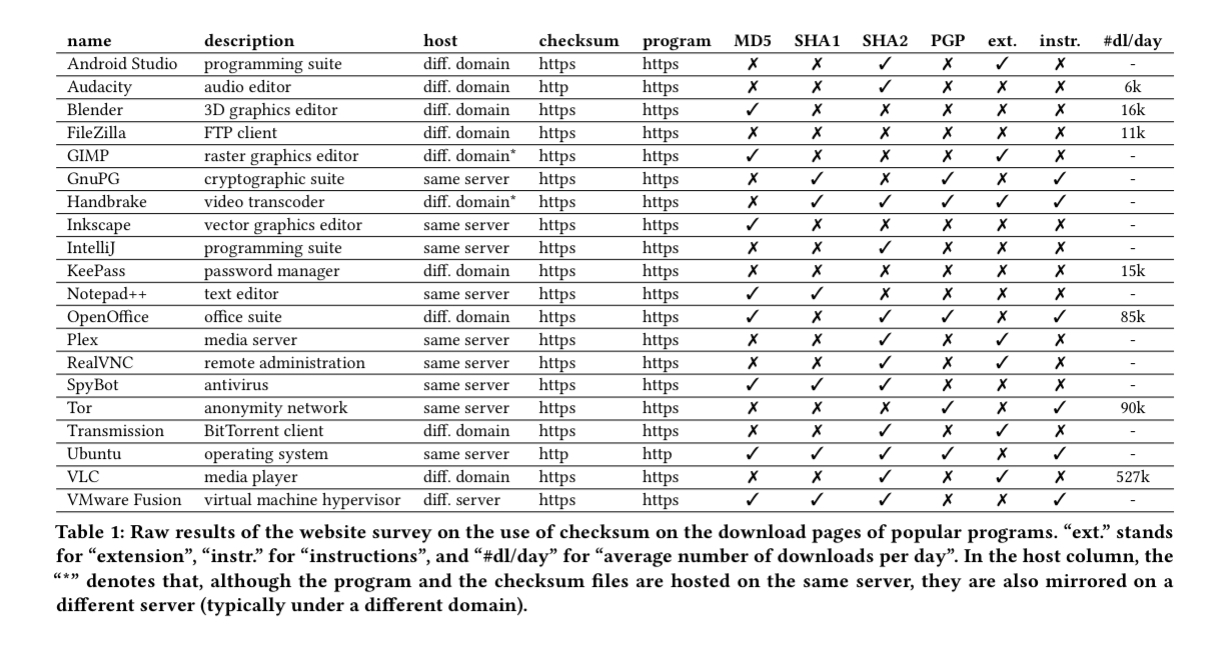Ensure that you have downloaded a file to your Mac for which you would like to see the checksum. In the below example I have downloaded the WinMD5 Free tool and would like to check the checksum to see if it matches with the one given on its website. Click on Launchpad in your dock, search for and click on Terminal, and it will launch for you. In this article we will show you how to disable the Disk Image Checksum Verification feature of MacOS. Disable Disk Image Verification on Mac OS. Open a terminal and type the following command: defaults write com.apple.frameworks.diskimages skip-verify -bool YES; Disable this feature, only if you use disk image from trusted sources. Sooner or Later every Mac user will need to make sure their MACOSX installer dmg is genuine and intact. Since Apple doesn't provide such place to check this information, here you are the SHA-1, MD5, CRC-32 (and in some cases Checksum) for all (known) macos x setup files. Verify that a disk image’s data isn’t corrupted using Disk Utility on Mac The data in a disk image can be corrupted if a problem occurs while it’s being copied or if someone modifies it. You can see whether a disk image’s data has been corrupted by verifying its checksum, which is a calculation of all of its data. Mac OS X uses a checksum-a mathematical operation on the binary data that constitutes the file-to verify that the transferred file is a true copy of the original. A change of even a single byte will change the checksum value. If you get an “invalid checksum” error, the file is most likely irreparably corrupt and will need to be reacquired.
Disk Utility User Guide

You can restore a disk image to a disk. To do this, you first need to erase the disk. If the disk image has multiple partitions, you must restore each partition individually.
Restore a disk image with a single volume to a disk
In the Disk Utility app on your Mac, select the volume that you want to restore in the sidebar, then click the Restore button .
This is the volume that is erased and becomes the exact copy.
Click the Restore pop-up menu, then choose the volume you want to copy.
If you’re restoring from a disk image, click the Image button, then navigate to that disk image.
Click Restore.
Restore a disk image with multiple volumes to a disk

To restore a disk image with multiple volumes to a disk, you must partition the destination disk, then restore each volume individually.
Cmos Checksum Is Invalid
In the Finder on your Mac, double-click the disk image to open it.
The disk image’s volumes appear as disks in the Finder.
In the Disk Utility app, select the disk in the sidebar, click the Partition button , then partition the destination disk.
The destination disk must have as many partitions as the disk image, and each of the disk’s partitions must be at least as large as the corresponding partition in the disk image. See Partition a physical disk in Disk Utility on Mac.
In the sidebar, select the volume that you want to restore, then click the Restore button .
This is the volume that is erased and becomes the exact copy.
Do one of the following:
Restore from a volume: Click the “Restore from” pop-up menu, then choose the volume you want to copy.
Restore from a disk image: Click Image, choose the disk image you want to copy, then click Open.
Click Restore.
Repeat steps 3–5 for each remaining partition.
Mac Invalid Checksum Dmg High Sierra


